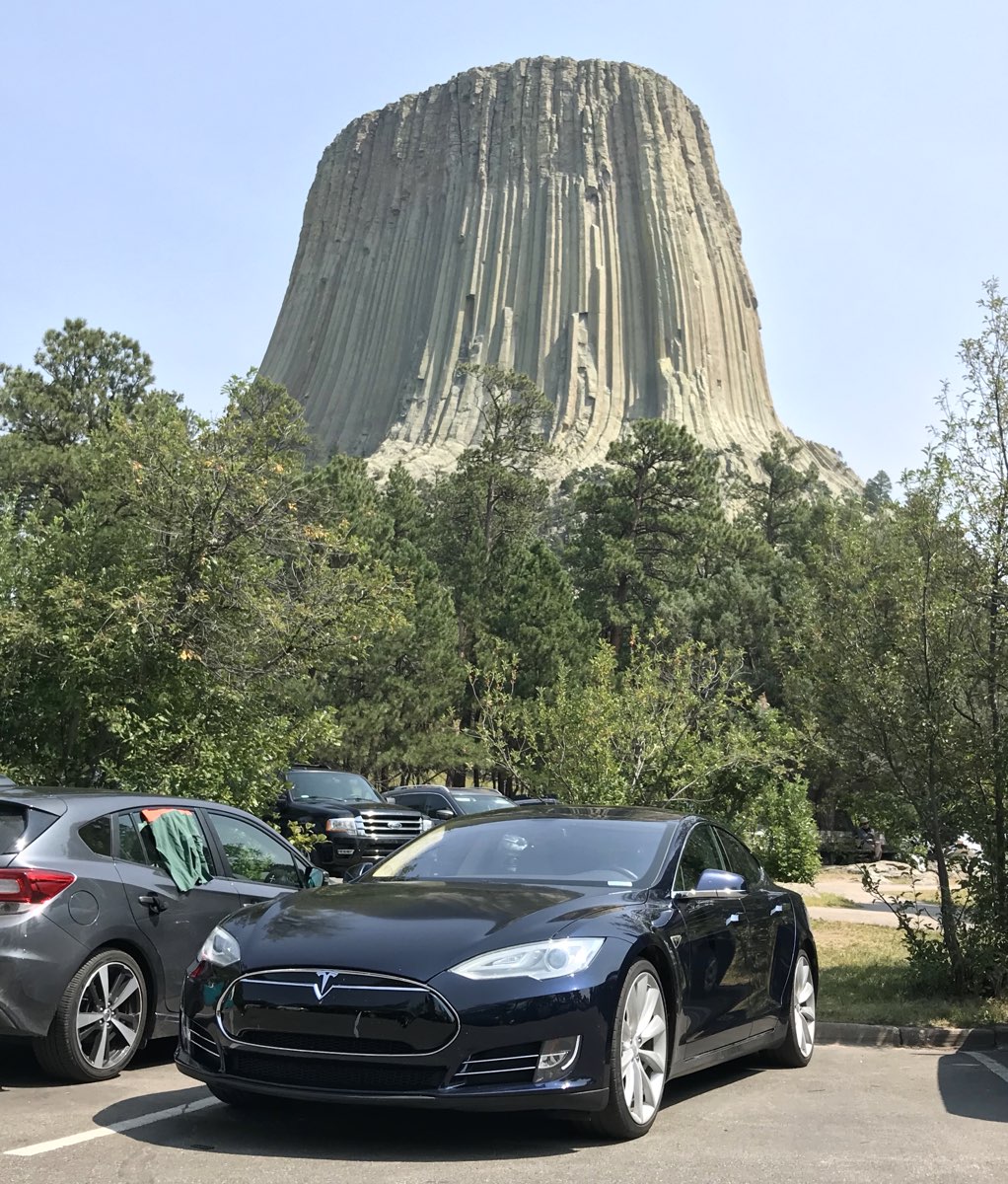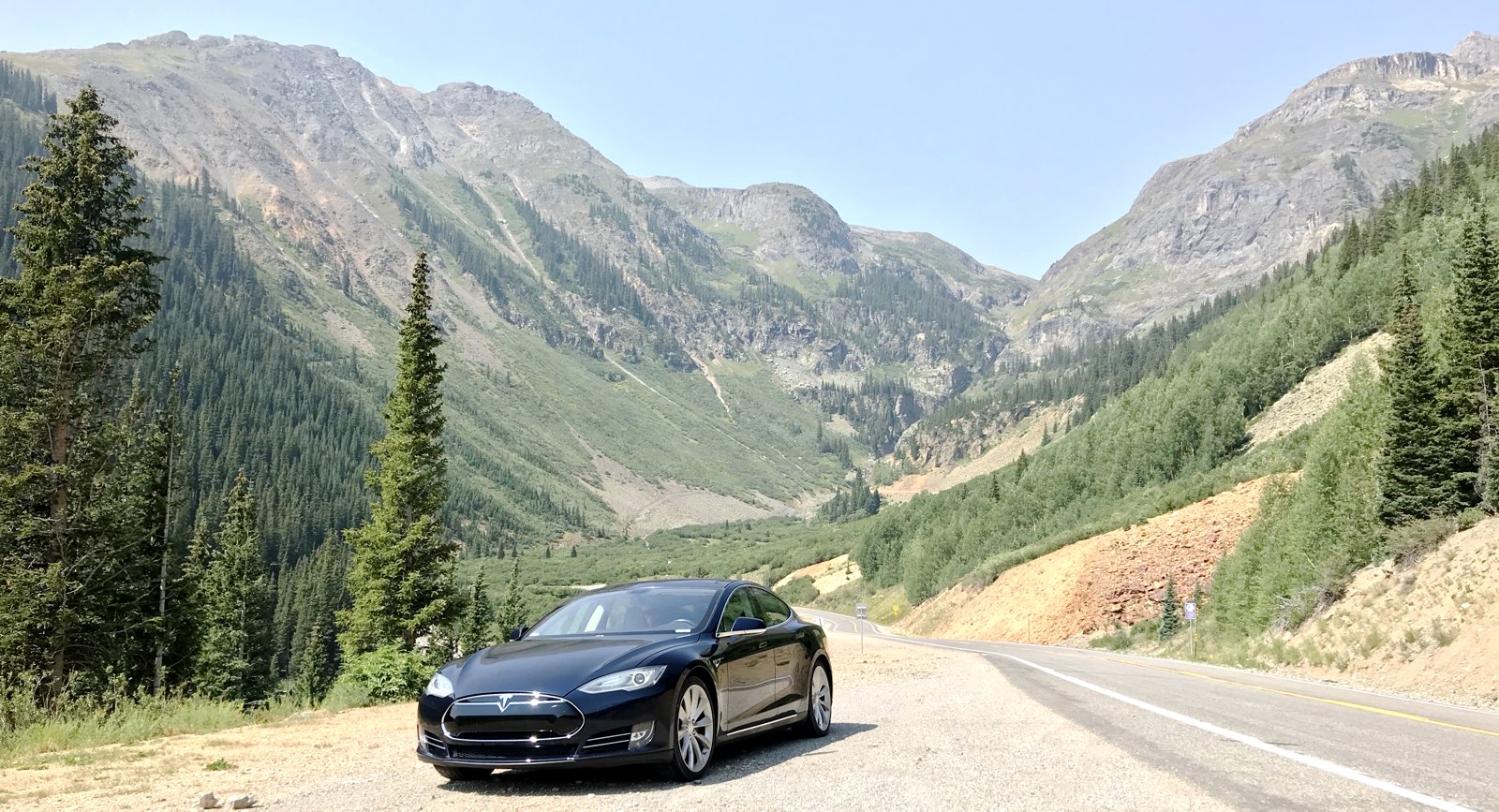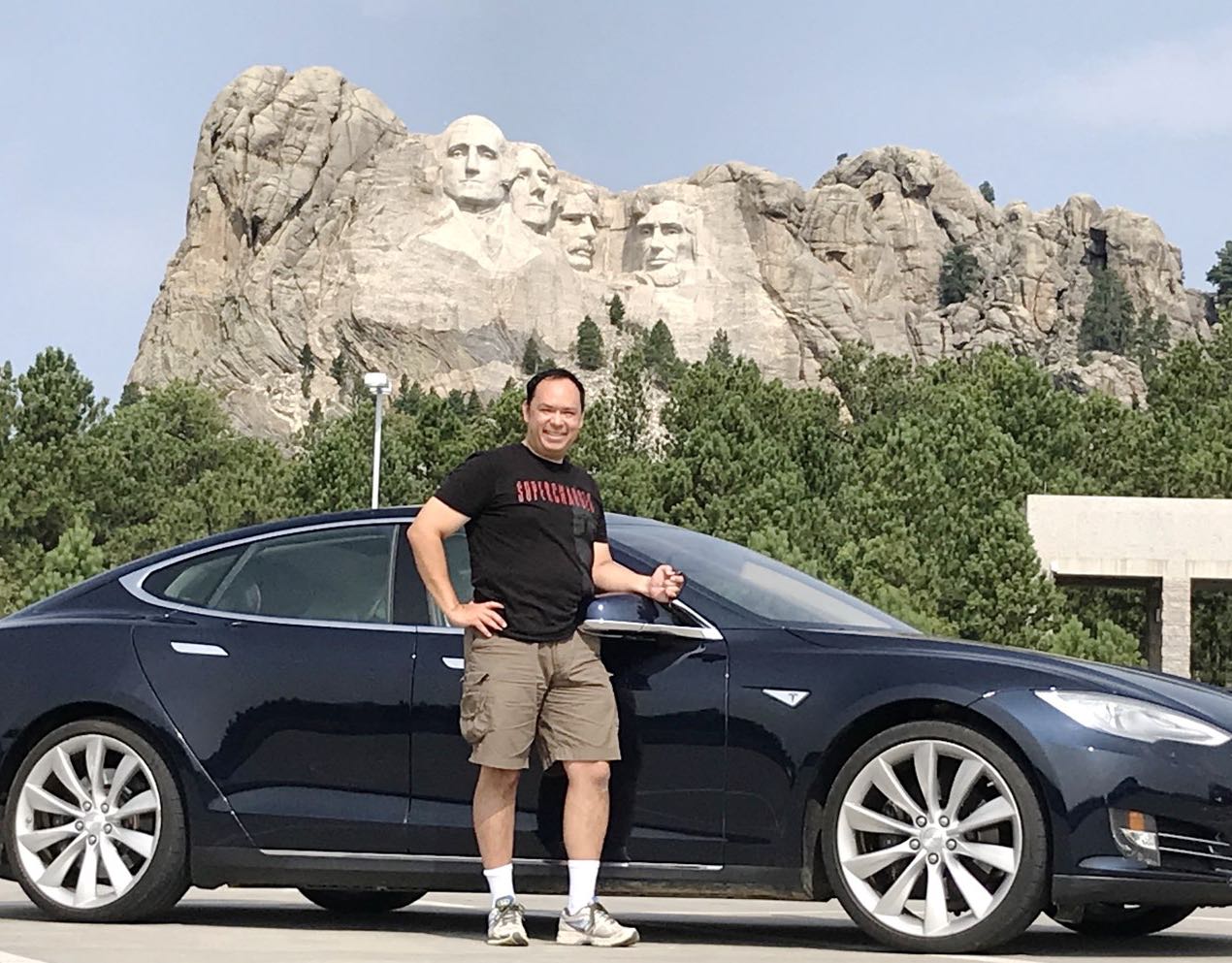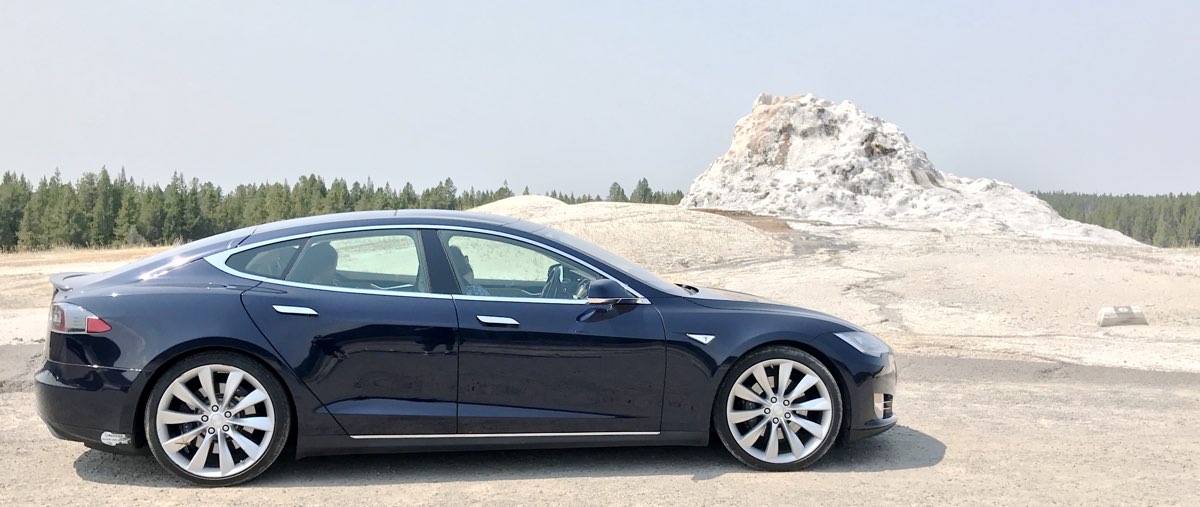Tesla Model S - "American West" Road Trip
|
4647-mile all-electric road trip
through the American West
Our last major all-electric road trip,
2824 miles through "Indian Country" two years ago,
was such a wonderful and beautiful success that in 2018
I planned another even longer all-electric road trip.
Last time we minimized usage of the vacation time given by my wife's employer.
This time, we just blew right through her vacation time with abandon.
However we still had a hard time constraint completely due to our little humans:
The trip had to fit between the childrens' last day of summer school
and the Thursday before their first day of grade school,
so that we all had enough time to wash laundry, prepare for school, and recover.
The little humans can only take so much,
and we wanted the children to be well-rested for school.
The other time constraint was to rendezvous with my wife
and mother of my children
in
northern Utah
on Day 7, the
last day of a conference she attended there.
To find points of interest, I started by reusing the "Indian Country" guide and map
from two years ago
the Automobile Association of America published to help celebrate this centenary of the National Park Service.
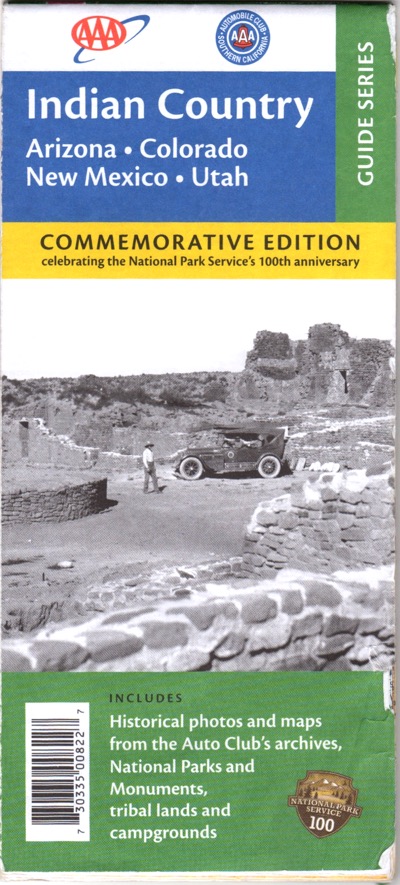
|
But this time my scope was larger,
so I bought the "Your Guide to the National Parks" book as my other primary source for points of interest.
I combined those with points of interest I could find online for every State
I could visit within the above time constraints.
Make sure you go back and read my 2824-mile road trip.
There I wrote that, when I was a child, my parents took me, starting from my Southern California home, on
long, cross-country road trips,
along the way visiting various national parks like Yellowstone, Bryce, and Petrified Forest.
My father had AAA plan out the itinerary in the form of
custom-made spiral-bound notebooks containing hundreds of pages of maps highlighting the exact route
he would drive us from state to state.
I remember flipping the pages of these books to follow our travel on the highways.
My memories of exploring the natural wonders in our country are among the most valued of my childhood.
Carrying the gift forward to my children, I wanted to bring my children
to ever more amazing places we could see around our country.
|
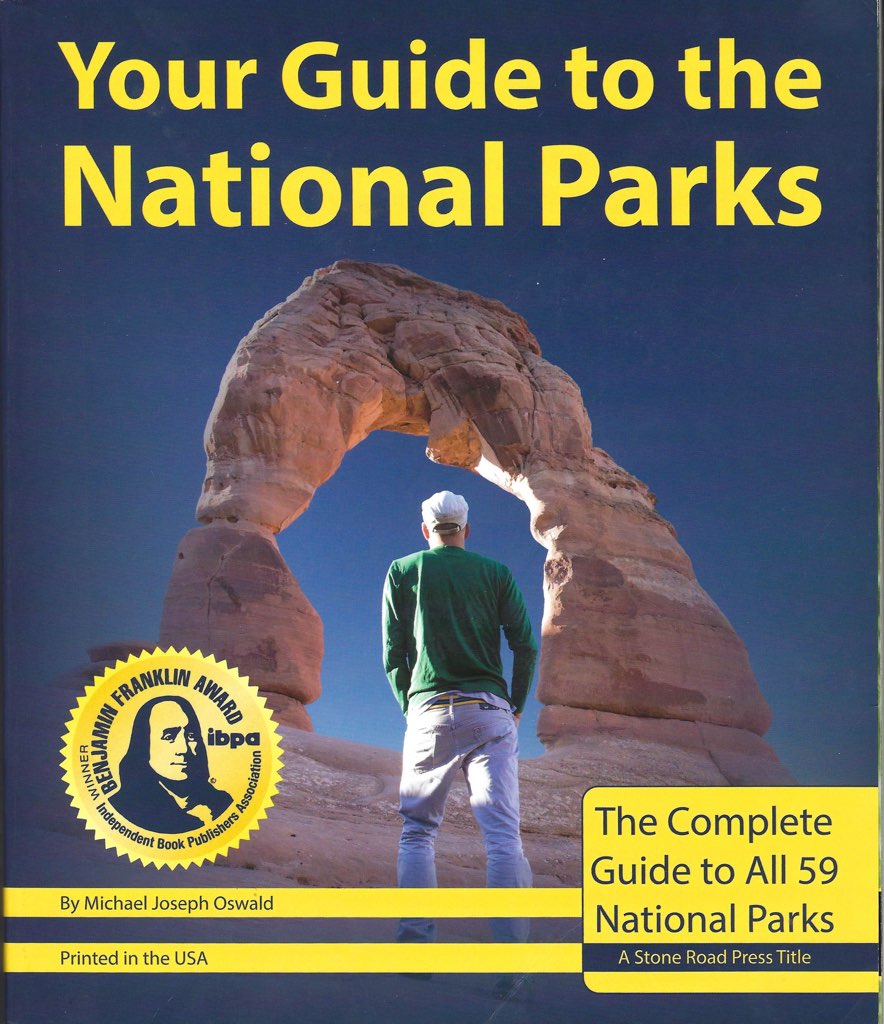
|
As I did two years ago, Google My Maps to help plan my route. I used it to calculate the travel time
between stops and estimate how far we could travel by dinner each day.
| Step 1 |
I gathered onto My Map the points of interest (green pins)
using research from maps and guides I had first, then
online second,
filtered by the time constraints of the trip.
|
| Step 2 |
Then I added charging locations to My Map:
- Tesla Superchargers
(red pins)
using the hundreds listed on
Tesla's Supercharger site
and the crowd-sourced Supercharge.info site.
- Destination Chargers
(black pins)
on the Tesla Destination Network,
listing thousands of hotels that, because they understand the needs of Tesla owners,
provide Tesla-native stalls for overnight charging
just like I do at home.
- If needed, fill in any remaining charging gaps with thousands of chargers listed at PlugShare.
|
| Step 3 |
Connect the dots, that is, work out the fastest route
(known as solving the
Travelling Salesman Problem)
to connect the the points of interest (Step 1) first,
then with the assistance of the available charging locations (Step 2 & 3).
|
| Step 4 |
Optimize the route. I designed my itinerary to have us visit,
preferably in the morning (cooler part of the summer day),
at least one major point of interest for enough time
each day,
except the first and last to cross the Mojave desert.
|
| |
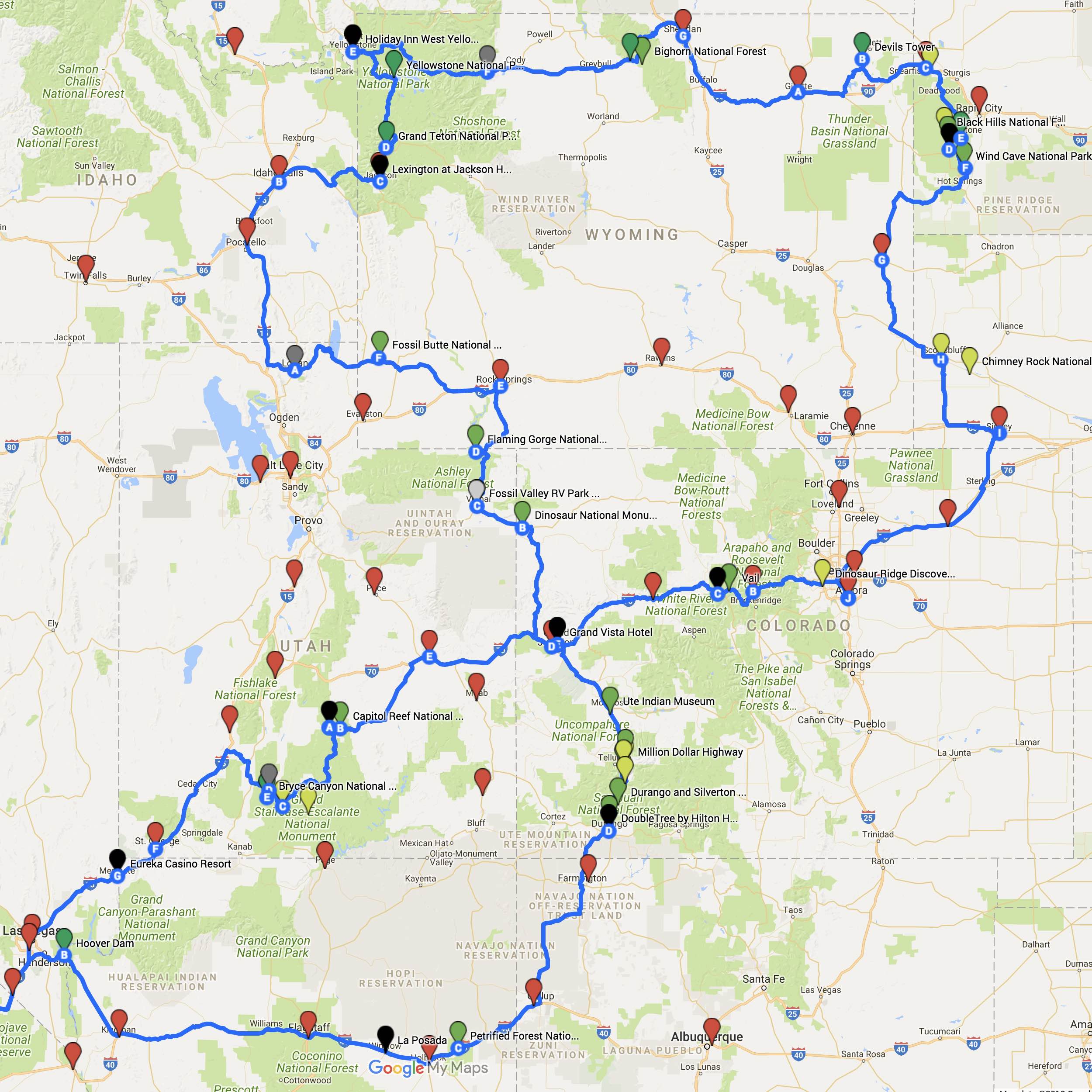
Click to view using Google My Maps
|
The result is a map like on the right, a 20-day all-electric road trip!
It is a figure-8 loop: the children and I had exactly 7 days to sightsee before
picking up my wife in northern Utah,
then the rest of the trip packed in as much as we could see while
returning home after 13 days.
The two places where we would cross our own path is Grand Junction, Colorado, and
I-15 south of Las Vegas.
|
I already bought an NPS Annual Pass because of
our Grand Canyon Railway road trip.
With the trip planned, I could then book the hotels and tours on our itinerary.
Most of the the interesting locations are impacted and must be booked several months in advance
simply because it attracts tourists from all around the world,
precluding any notion of "spontaneous travel" to these points of interest.
Seven months prior to our visit, I discovered
no appropriate room was available for us to book in Yellowstone,
so
I immediately booked with
a member of the Tesla Destination network in West Yellowstone, Montana.
So here's a picture log of how I drove my Model S on a 4647-mile road trip.
|
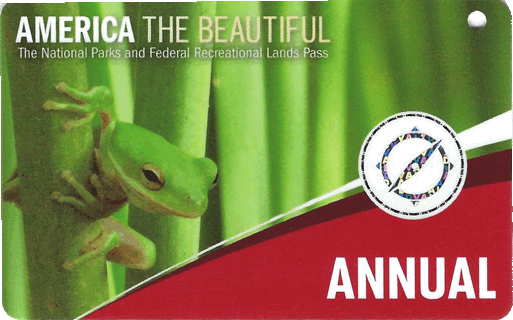
|
| |
Model S American West Road Trip
|
|
Days Charging at
| |
Destination
|
|
Supercharger
| |
7
|
|
13
|
|
| Cargo Space
|
|
The cargo space in the Model S was more than enough for this 20-day road trip.
We carried four large duffle bags, one for each member of our family, in the trunk.
We made great use of the flexibility of duffle bags:
one large laundry bag would stay in the trunk to hold our dirty laundry,
so every day our duffles would get lighter and smaller.
The process starts over when washing our laundry at the hotel.
|

Frunk
|
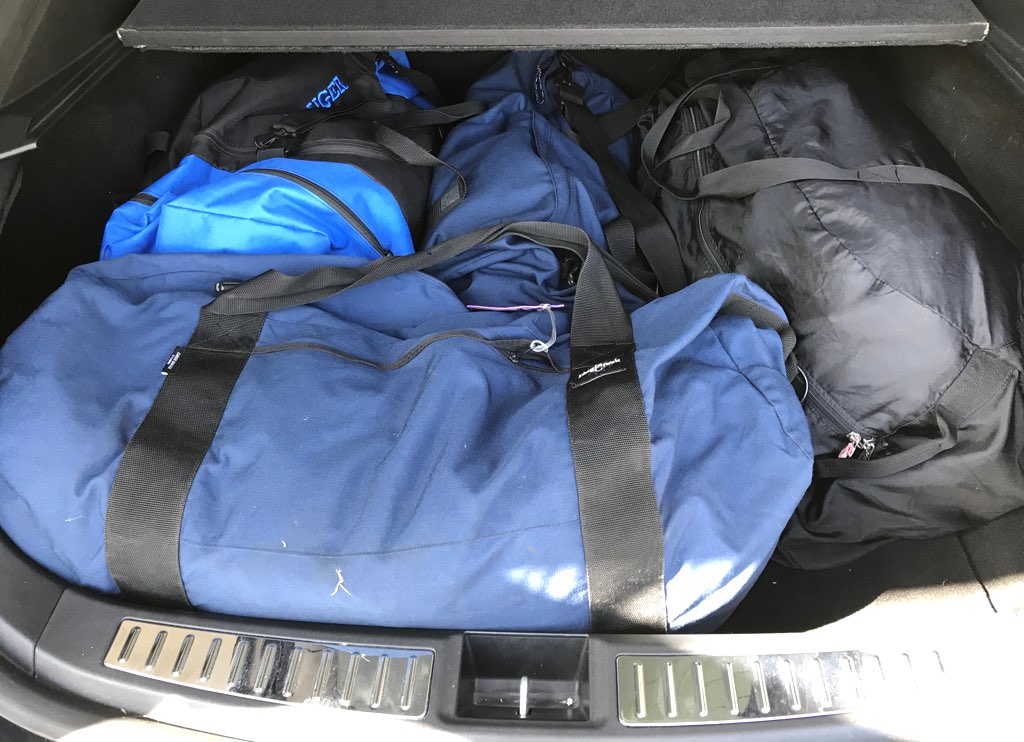
Trunk
| |
The frunk held laptop bags for my wife and I,
Costco variety food boxes and numerous snack foods,
water bottles,
the kids' backpacks and shoes,
reusable grocery bags,
and other miscellaneous travel items.
We kept the parcel shelf in the back trunk for security, compromising its capacity.
Because I knew this was the longest trip I have yet driven,
I asked Tesla to detach the rear-facing seats so I can leave these third-row seats at home
and we can use the space under the trunk. I scheduled Tesla to reattach the seats in September.
This "under trunk" carried 80 small Costco water bottles to anticipate a hot climate
and all the charging cables and adapters I have.
|
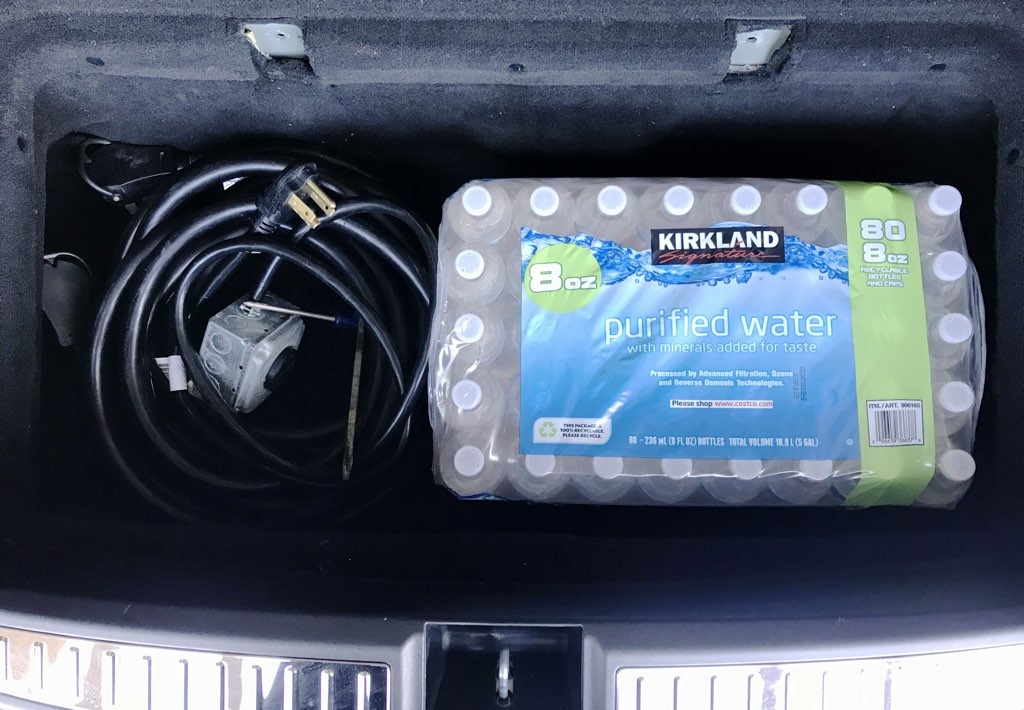
Under Trunk
|
I used my iPhone 7 to shoot nearly all these pictures,
supplemented by a Panasonic HC-WXF991,
which has a great lens and 4K video for the wildlife I intend to spot.
|
In many of these places literally nobody else is around,
so I brought an extendable tripod with a clamp for the iPhone
and used my Apple Watch as a remote to trigger the camera.
|
To help keep the kids occupied and looking at our surroundings as we traveled,
I reused the same pair of (slightly-different) Interstate Bingo boards from
two years ago.
They remembered these well.
We reset the boards at each leg of travel, and the winner would get a prize at our next destination.
That game supplemented their usual array of books, coloring pads, and other toys and dolls.
Halfway through the trip, these were so tattered some of the little red windows fell out.
|
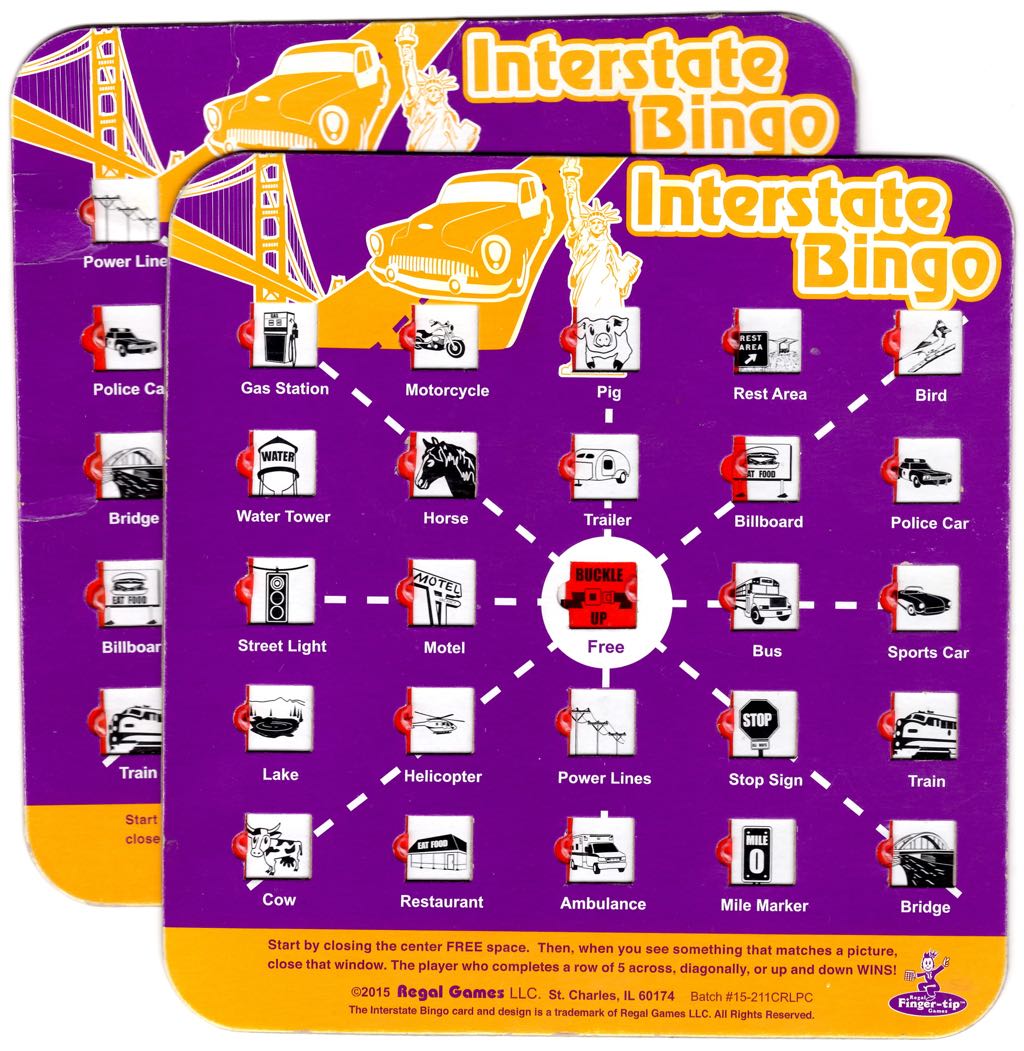
|
|
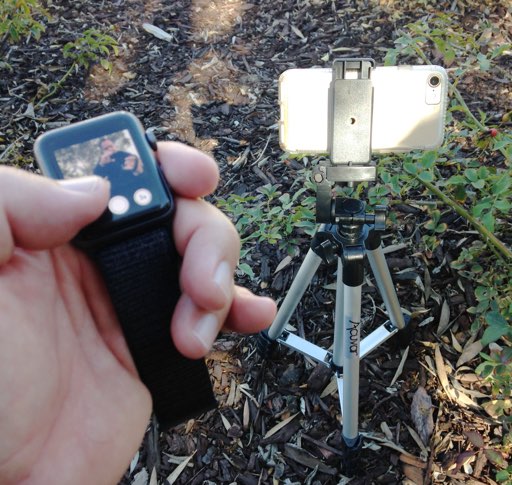
|
The other travel entertainment for the kids were our old iPhone 5 and iPhone 4,
with no active cellular plan, that we let them use for this trip.
Our children are old enough now they could shoot pictures on their own, both during the drive
and at points of interest.
|
As we traveled, I logged the time, odometer, and range remaining for every event of interest.
Click on the calendar to explore the trip
or read on.
Dean E. Dauger holds a Ph. D. in physics from UCLA, where his group
created the first Mac cluster in 1998. Dr. Dauger is the award-winning
author in multiple American Institute of Physics' Software Contests and
co-authored the original, award-winning Kai's Power Tools
image-processing package for Adobe Photoshop.
After founding his company,
Dauger Research, Inc., its debut product,
Pooch, derived from Dr. Dauger's experience using clusters for his
physics research, was soon awarded as "most innovative" by IEEE Cluster
and continues to revolutionize parallel computing and clusters worldwide
with its patented technology.
|
Back to home
Thanks for having a look!
| 